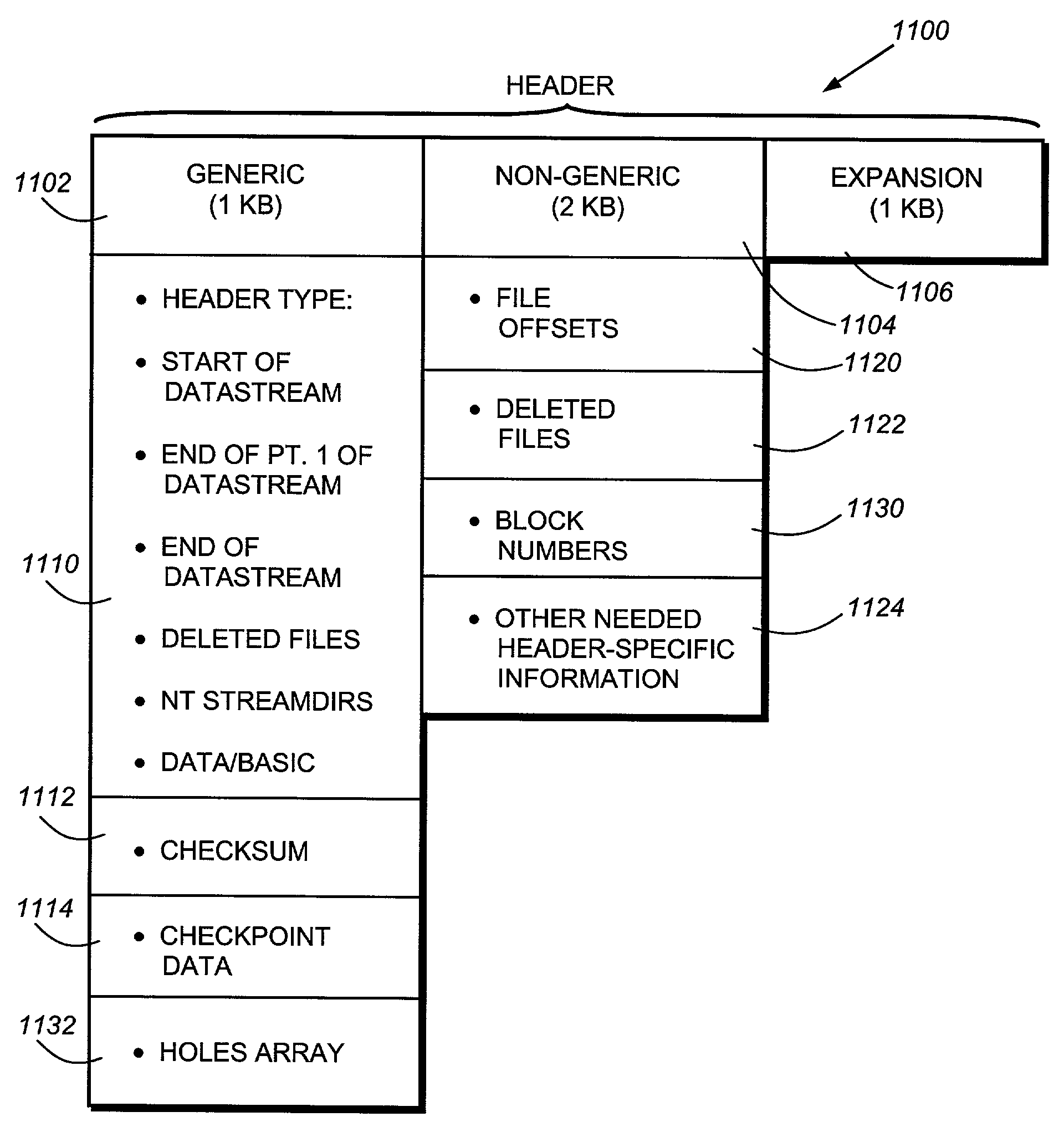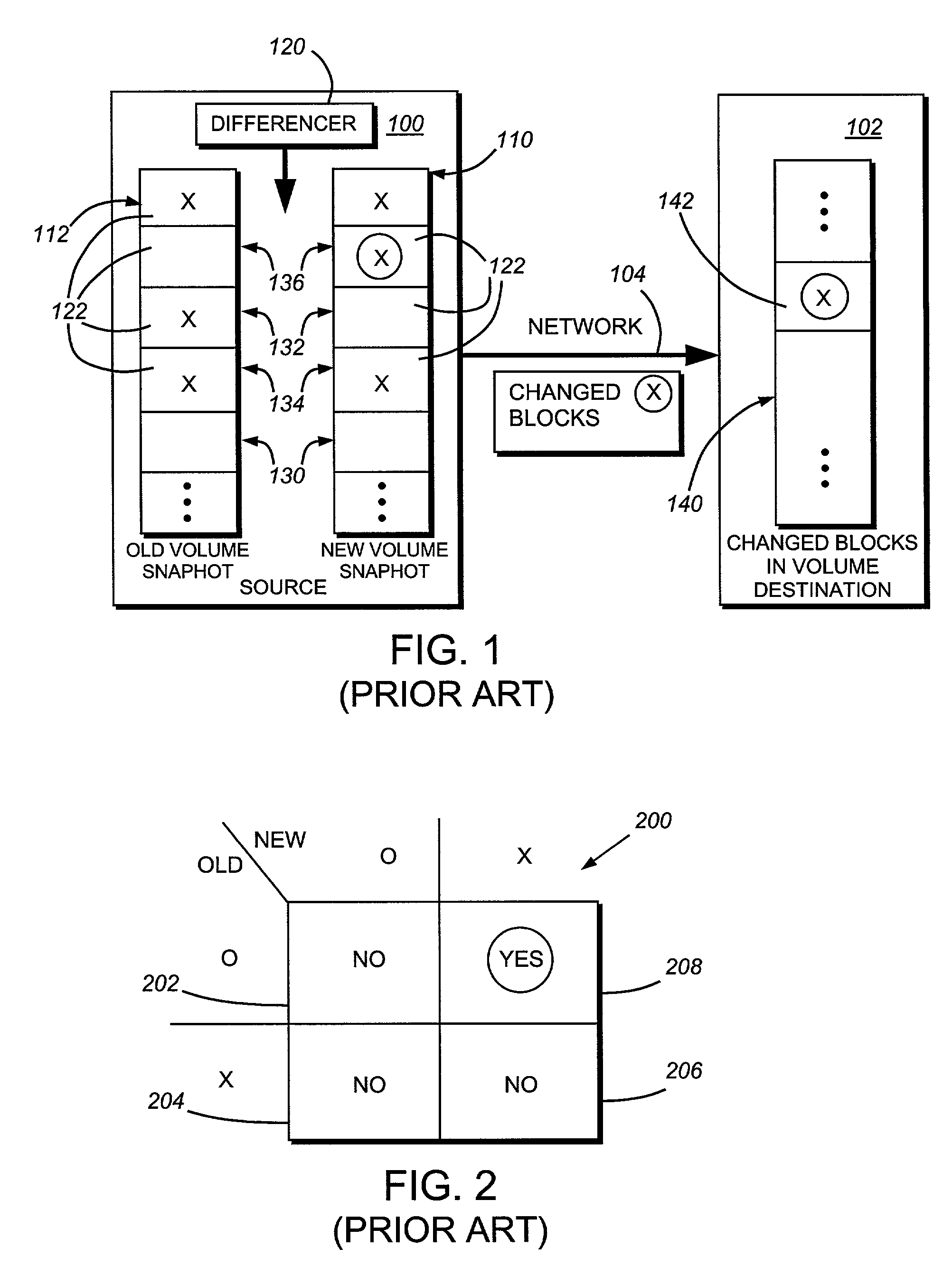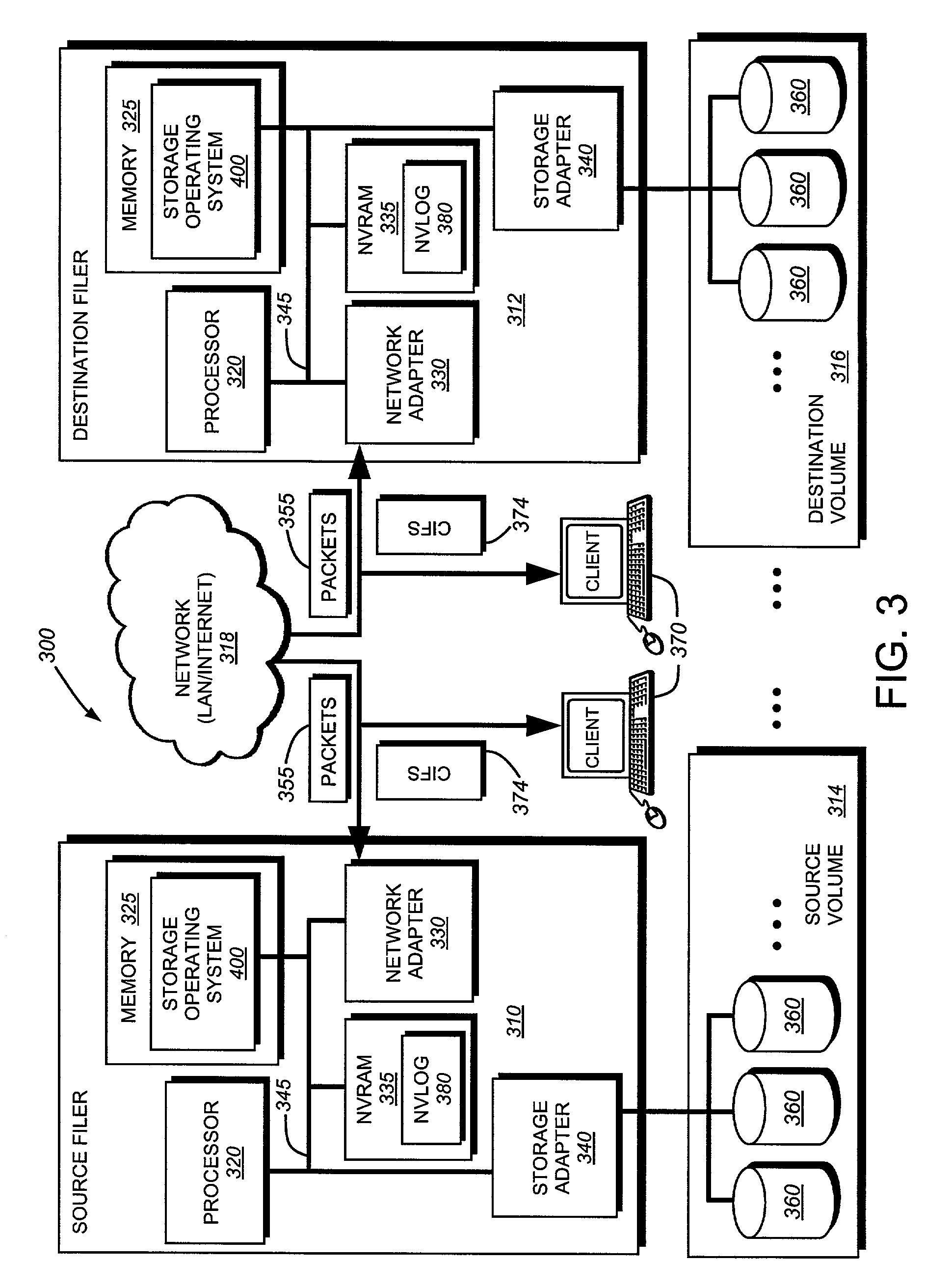Format for transmission file system information between a source and a destination
a file system and transmission technology, applied in the field of data storage using file servers, can solve the problems of inefficient and time-consuming, inconvenient recopying of the entire file system to a remote (destination) site over a network, and severely tax the bandwidth of the network and also the processing capabilities of both the source filer and the destination filer, so as to achieve fast access to the file system
- Summary
- Abstract
- Description
- Claims
- Application Information
AI Technical Summary
Benefits of technology
Problems solved by technology
Method used
Image
Examples
Embodiment Construction
[0047]A. Network and File Server Environment
[0048]By way of further background, FIG. 3 is a schematic block diagram of a storage system environment 300 that includes a pair of interconnected file servers including a source file server 310 and a destination file server 312 that may each be advantageously used with the present invention. For the purposes of this description, the source file server is a networked computer that manages storage one or more source volumes 314, is each having an array of storage disks 360 (described further below). Likewise, the destination filer 312 manages one or more destination volumes 316, also comprising arrays of disks 360. The source and destination file servers or “filers” are linked via a network 318 that can comprise a local or wide area network, such as the well-known Internet. An appropriate network adapter 330 residing in each filer 310, 312 facilitates communication over the network 318. Also for the purposes of this description, like compon...
PUM
 Login to View More
Login to View More Abstract
Description
Claims
Application Information
 Login to View More
Login to View More - R&D
- Intellectual Property
- Life Sciences
- Materials
- Tech Scout
- Unparalleled Data Quality
- Higher Quality Content
- 60% Fewer Hallucinations
Browse by: Latest US Patents, China's latest patents, Technical Efficacy Thesaurus, Application Domain, Technology Topic, Popular Technical Reports.
© 2025 PatSnap. All rights reserved.Legal|Privacy policy|Modern Slavery Act Transparency Statement|Sitemap|About US| Contact US: help@patsnap.com



